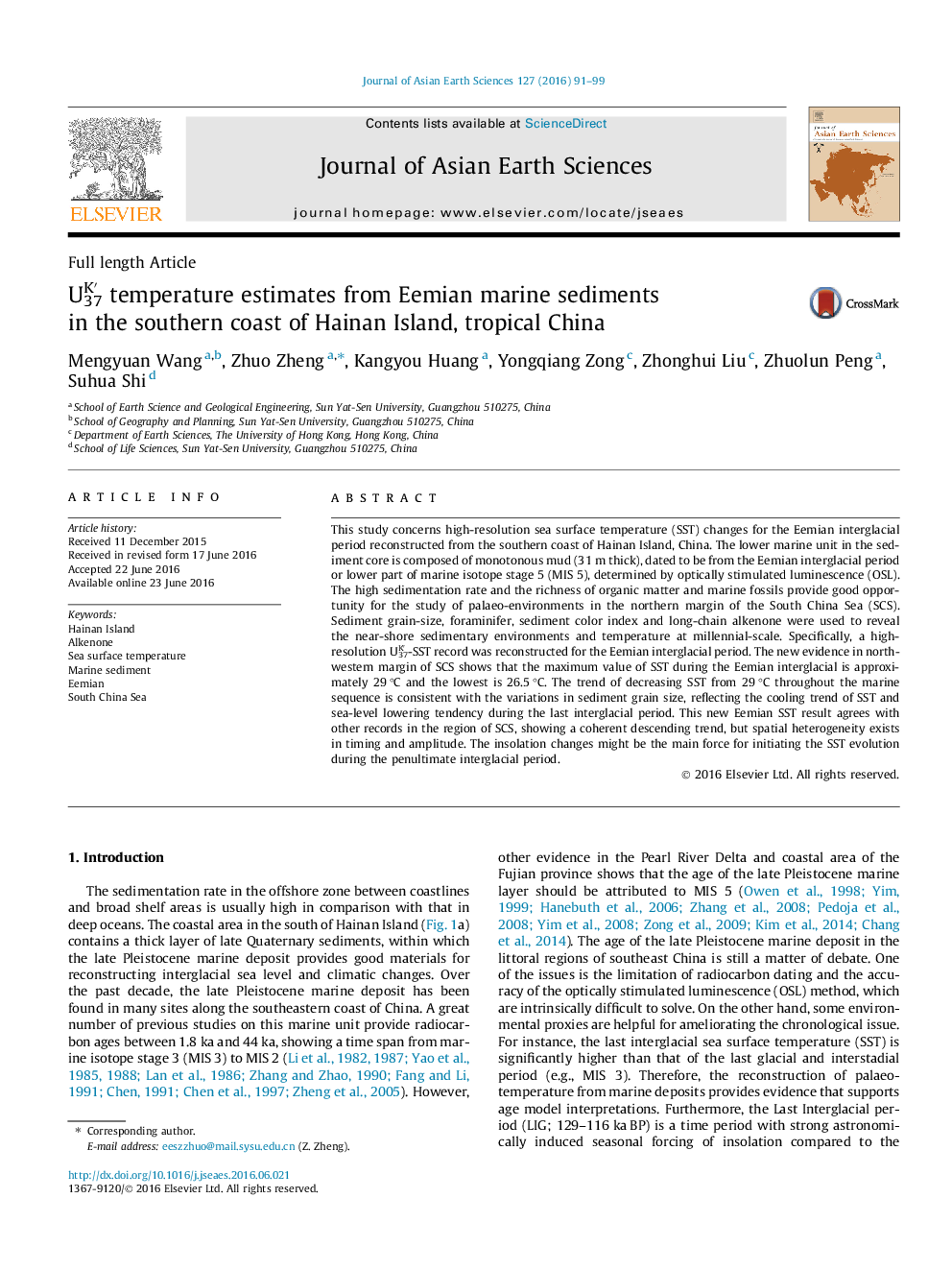| کد مقاله | کد نشریه | سال انتشار | مقاله انگلیسی | نسخه تمام متن |
|---|---|---|---|---|
| 4729947 | 1640344 | 2016 | 9 صفحه PDF | دانلود رایگان |

• Late Pleistocene marine unit from coastal Hainan Island is dated to the Eemian interglacial period.
• The UK′37–SSTs range from 29 to 26.5 °C throughout the Eemian high sea-level period.
• The decreasing trend of the reconstructed SST from TLG01 agrees with the previous records from the South China Sea.
• Sediment grain-size, foraminifer and sediment color show accordant variations.
This study concerns high-resolution sea surface temperature (SST) changes for the Eemian interglacial period reconstructed from the southern coast of Hainan Island, China. The lower marine unit in the sediment core is composed of monotonous mud (31 m thick), dated to be from the Eemian interglacial period or lower part of marine isotope stage 5 (MIS 5), determined by optically stimulated luminescence (OSL). The high sedimentation rate and the richness of organic matter and marine fossils provide good opportunity for the study of palaeo-environments in the northern margin of the South China Sea (SCS). Sediment grain-size, foraminifer, sediment color index and long-chain alkenone were used to reveal the near-shore sedimentary environments and temperature at millennial-scale. Specifically, a high-resolution UK′37-SST record was reconstructed for the Eemian interglacial period. The new evidence in northwestern margin of SCS shows that the maximum value of SST during the Eemian interglacial is approximately 29 °C and the lowest is 26.5 °C. The trend of decreasing SST from 29 °C throughout the marine sequence is consistent with the variations in sediment grain size, reflecting the cooling trend of SST and sea-level lowering tendency during the last interglacial period. This new Eemian SST result agrees with other records in the region of SCS, showing a coherent descending trend, but spatial heterogeneity exists in timing and amplitude. The insolation changes might be the main force for initiating the SST evolution during the penultimate interglacial period.
Journal: Journal of Asian Earth Sciences - Volume 127, 1 September 2016, Pages 91–99